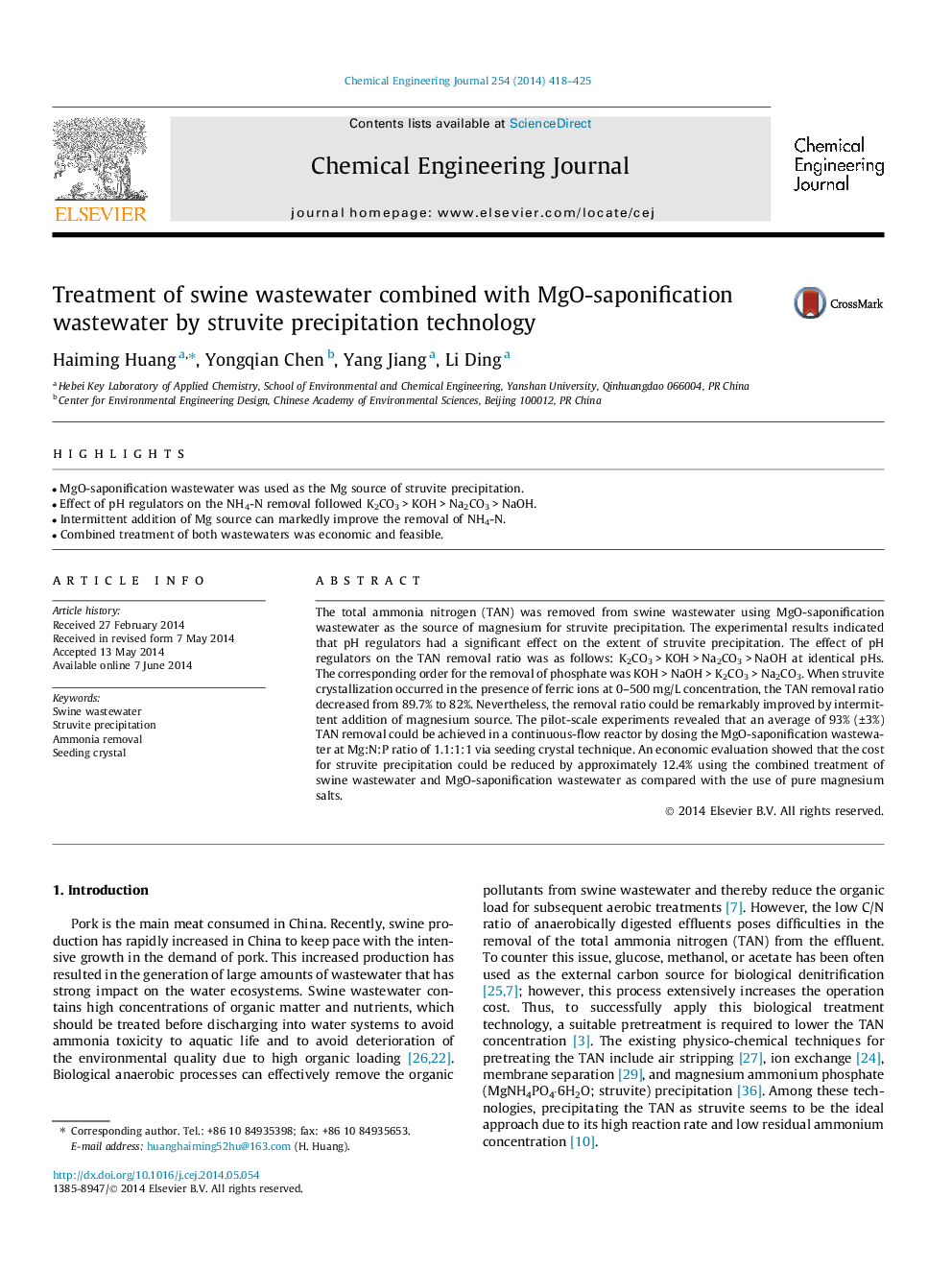| Article ID | Journal | Published Year | Pages | File Type |
|---|---|---|---|---|
| 147271 | Chemical Engineering Journal | 2014 | 8 Pages |
•MgO-saponification wastewater was used as the Mg source of struvite precipitation.•Effect of pH regulators on the NH4-N removal followed K2CO3 > KOH > Na2CO3 > NaOH.•Intermittent addition of Mg source can markedly improve the removal of NH4-N.•Combined treatment of both wastewaters was economic and feasible.
The total ammonia nitrogen (TAN) was removed from swine wastewater using MgO-saponification wastewater as the source of magnesium for struvite precipitation. The experimental results indicated that pH regulators had a significant effect on the extent of struvite precipitation. The effect of pH regulators on the TAN removal ratio was as follows: K2CO3 > KOH > Na2CO3 > NaOH at identical pHs. The corresponding order for the removal of phosphate was KOH > NaOH > K2CO3 > Na2CO3. When struvite crystallization occurred in the presence of ferric ions at 0–500 mg/L concentration, the TAN removal ratio decreased from 89.7% to 82%. Nevertheless, the removal ratio could be remarkably improved by intermittent addition of magnesium source. The pilot-scale experiments revealed that an average of 93% (±3%) TAN removal could be achieved in a continuous-flow reactor by dosing the MgO-saponification wastewater at Mg:N:P ratio of 1.1:1:1 via seeding crystal technique. An economic evaluation showed that the cost for struvite precipitation could be reduced by approximately 12.4% using the combined treatment of swine wastewater and MgO-saponification wastewater as compared with the use of pure magnesium salts.
